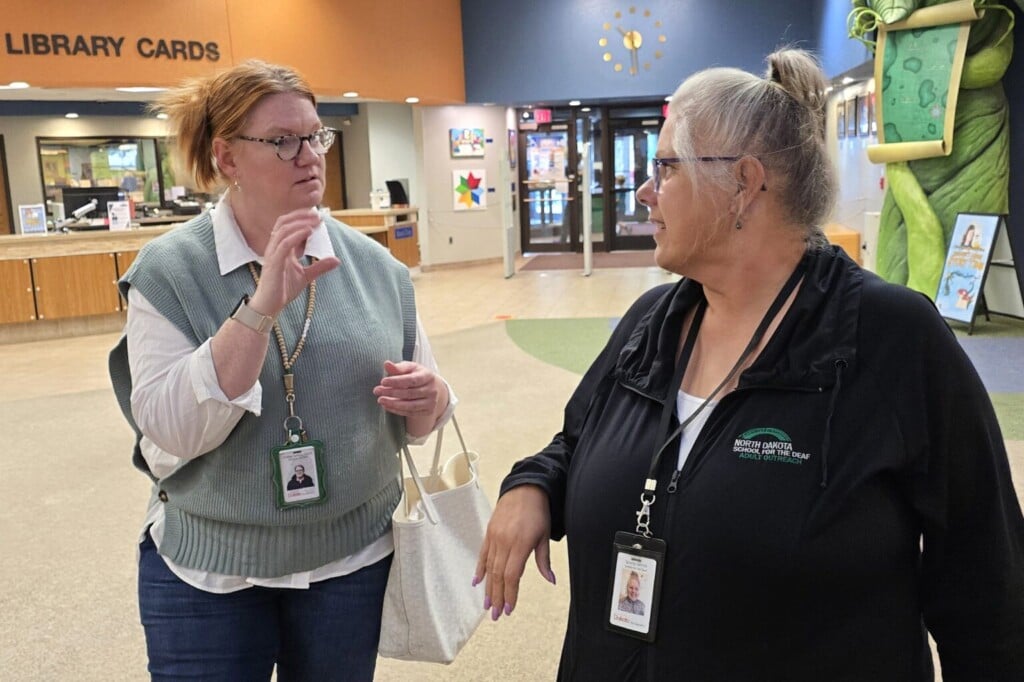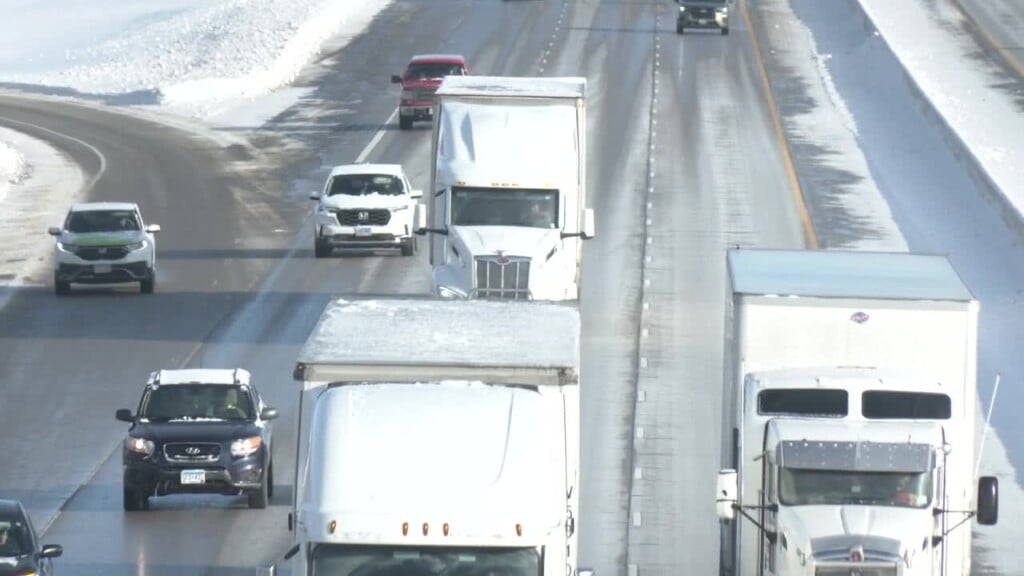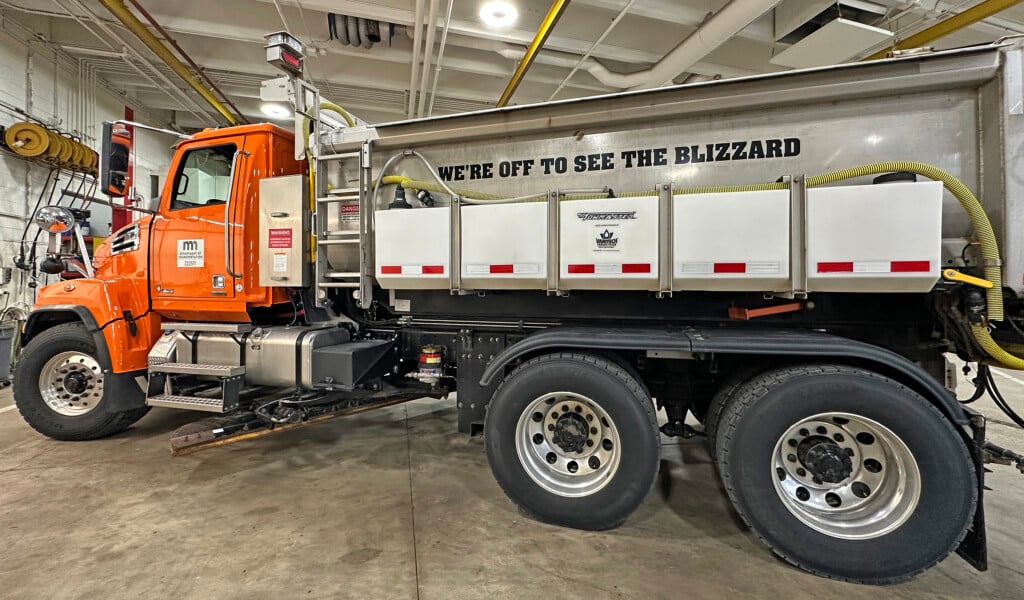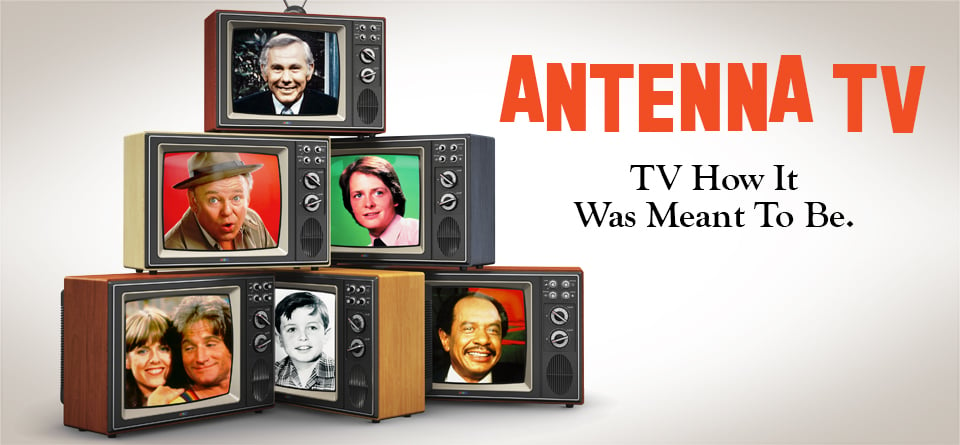Lack of sign language interpreters in North Dakota a major barrier

BISMARCK, N.D. (North Dakota Monitor) — The video sign language service the Bismarck hospital was using was not working properly, and Tammy Derrick wanted to know what was happening with her son.
She eventually requested an on-site sign language interpreter, knowing it was one of her protected rights under the Americans with Disabilities Act.
“I was very demanding, because it was my son’s life on the line and I wanted to know what was going on,” Derrick recalled in an interview through an ASL interpreter.
The hospital provided an interpreter, and her son ended up being OK. But Derrick worries other deaf people in similar circumstances could have different results, especially in a state like North Dakota that lacks interpreters.
North Dakota has 15 nationally certified American Sign Language interpreters for the whole state, with none living west of U.S. Highway 83, according to a national registry.
Rep. Kathy Frelich, R-Devils Lake, highlighted the shortage during a recent legislative committee meeting.
“I’m not sure what the answer is there, but I do need to let you know that is a problem for us,” said Frelich, who works as an adult outreach specialist from the North Dakota School for the Deaf.
Lawmakers are studying barriers to effective communication for people who are deaf or hard of hearing.

Tammy Derrick, right, communication and advocacy coordinator for the North Dakota School for the Deaf/Resource Center for Deaf and Hard of Hearing, signs to American Sign Language interpreter Lindsey Solberg Herbel during an interview on Sept. 18, 2025. (Photo by Michael Achterling/North Dakota Monitor)
Derrick, the communication and advocacy coordinator for the North Dakota School for the Deaf/Resource Center for Deaf and Hard of Hearing, said she’d like to see each major city in North Dakota have at least four or five certified interpreters, giving deaf people more options during an emergency.
“It would just be easier to call interpreters, and they would be more local,” Derrick said.
Two interpreters in the Bismarck area, Lindsey Solberg Herbel and Renae Bitner, are in high demand. They both work full time providing sign language in schools while also interpreting for medical appointments, legal hearings, industry conferences and special events like weddings or funerals.
Solberg Herbel interpreted for then-Gov. Doug Burgum during COVID-19 pandemic press conferences and traveled to Watford City, Dickinson and other communities for meetings and official functions.
Interpreters can spend a significant amount of time traveling to appointments, Bitner said. For example, both Bitner and Solberg Herbel have traveled to interpret the Medora Musical.
“No day is the same,” Bitner said. “We try to piecemeal it together as best as we can. We try to schedule appointments after school, during days when the teachers have in-service.”
There are only eight licensed interpreters who can work in North Dakota courtrooms, according to the School for the Deaf. Interpreting in courtrooms and in a medical setting requires specialized training, said Donna Sorensen, superintendent for the School for the Deaf.
Judges often recognize how busy a sign language interpreter’s calendar is, and they will schedule around the interpreter’s availability to ensure the deaf person can have accurate communication with the court, Solberg Herbel said.
Limits of technology
During the recent legislative hearing, Sen. Michelle Powers, R-Fargo, said she noticed there are examples of artificial intelligence doing sign language interpreting that could potentially fill gaps for on-site interpreters.
Frelich said she worries about whether AI can accurately interpret someone who needs to sign back through the device’s camera. Frelich said police officers have been trained to use talk-to-text applications and other written communication to relay messages with deaf people they encounter while out on patrol.
Sorensen said video American Sign Language services are consistently improving their quality and accuracy, but context and body language can be difficult to convey through a screen.
“And then you have technology that doesn’t work,” Sorensen said. “It pixelates. It gets blurry. It freezes, and you don’t want that when you are at a medical appointment possibly talking about life and death information.”
Derrick said deaf people also worry that emotions will not come through accurately with video interpreting and other types of assistive communication.

Lindsey Solberg Herbel, right, nationally certified American Sign Language interpreter, signs to Tammy Derrick during a presentation by Mike Chausse, left, executive director for North Dakota Assistive, during a legislative committee hearing on Sept. 4, 2025. (Photo by Michael Achterling/North Dakota Monitor)
In 1990, President George Bush signed the American with Disabilities Act, which requires state and local governments, as well as businesses and other nonprofit organizations that serve the public, to communicate effectively with people who have communication disabilities.
According to the Department of Justice Civil Rights Division, communicating effectively can have different interpretations in different settings. For example, a deaf person attending a city council meeting could require an ASL interpreter or real-time captioning if they don’t use sign language. The department also said an ASL interpreter would “generally be needed” during complex medical emergencies and appointments. However, in a retail situation or other short interactions, the department said writing notes back and forth could be appropriate.
ND lacks sign language training
The Registry of Interpreters for the Deaf provides the national American Sign Language certification, but it requires applicants to have a bachelor’s degree.
There are no four-year bachelor’s degree programs that offer a major for American Sign Language in North Dakota.
Minot State University and Lake Region State College in Devils Lake formed a partnership about 15 years ago to offer a four-year degree in interpreting, said Holly Pedersen, the ASL and interpreting program director at Minot State.
Students would learn sign language in their first two years at Lake Region and complete upper level undergraduate courses at Minot State. But it didn’t make sense for them to pause their practical-use training and then attempt to take the certification test, Pedersen said.
“Leadership at both institutions decided it wasn’t financially sustainable,” said Pedersen, also an associate professor of special education.
Lake Region State College turned its two-year American Sign Language interpreting program into a one-year certificate in 2020 due to declining enrollment, said Lloyd Halvorson, vice president of academic and student affairs.
Halvorson said college officials have started having discussions about expanding the American Sign Language program because they see a need for it. The college may focus on providing dual-credit opportunities to local high school students in an effort to build a pipeline that could feed into a new two-year program.
“If you don’t have an introduction to that career in high school, students aren’t thinking about that career,” he said.
Lake Region also has partnership agreements for American Sign Language courses at Valley City State University and the University of North Dakota through virtual and hybrid options.
Minot State University offers courses in American Sign Language and interpreting, but only as standalone certificates or part of a minor degree program, Pedersen said.
She said deafness is considered a “low-incidence disability” compared to other learning, speech and language and intellectual disabilities that make up the majority of special education programs in schools. In 2021, the National Deaf Center estimated about 3.6% of people in the United States considered themselves deaf or hard of hearing.
“Even though it is still really important and in need of service, it’s a small number,” Pedersen said.
The Registry of Interpreters for the Deaf also allows applicants to avoid the bachelor’s degree requirement by submitting an application outlining their college courses, interpreting experience and professional development, but that experience must equal 120 credit hours, said Catie Colamonico, certification manager for the registry.

Tammy Derrick, communication and advocacy coordinator for the North Dakota School for the Deaf/Resource Center for Deaf and Hard of Hearing. (Photo by Michael Achterling/North Dakota Monitor)
Colamonico, in an interview through an interpreter, said most people who apply to take the national certification test have a bachelor’s degree and have gone through an ASL program. She added the alternate path to certification without a degree is typically for people with less than a four-year degree, but have been working in the field as an ASL paraprofessional, or volunteer interpreter. They then use that experience to gain credit hours on their application.
Sorensen said another way to address the interpreter shortage is to have more people in different career fields learn and use sign language.
“You may not want to be an interpreter. Maybe you want to be a nurse, but you can be a nurse that knows sign language,” she said.
Meanwhile, state lawmakers studying the barriers to effective communication with North Dakotans who are deaf will make recommendations to Legislative Management before the 2027 legislative session.
“I have mad respect for interpreters and all the work that they do,” Derrick said. “I know deaf people that cherish our interpreters and value them, because without them, there would just be a lack of communication.”
North Dakota Monitor reporter Michael Achterling can be reached at machterling@northdakotamonitor.com.






